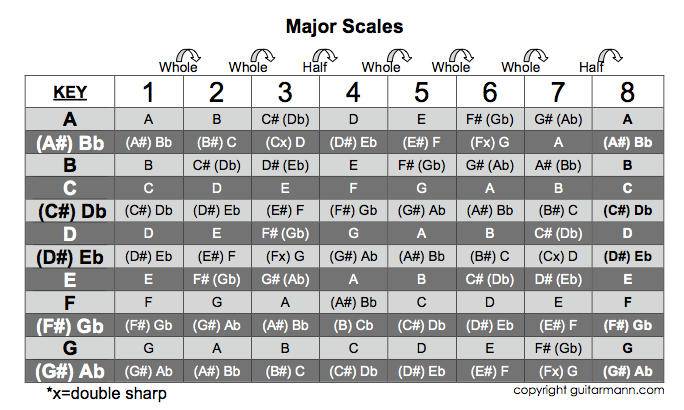
In my last article, I talked about the 5 Ways Nashville Numbers Will Change Your Life. So, if you don't even know what numbers are, start there. Otherwise, let's look at the basics of the system.
Almost all music is a clever arrangement of 7 notes. Pick almost any song you can think of, and you'll hear a group of 7 notes that are used to create chords, melody lines, harmony parts, guitar solos, etc. Just 7 notes! It's pretty amazing really. This grouping is called a "key". So, you have the key of D, the key of G, etc.
There are 12 notes that exist in the musical alphabet. By the way, the # sign stands for "sharp" and the b sign stands for "flat." Here is a list of all the notes:
A, A#orBb, B, C, C#orDb, D, D#orEb, E, F, F#orGb, G, G#orAb
We need to figure out how to identify the correct 7 notes that will make up a given key. Think of yourself as a kid detective on a mission. That helps!
Let's use C as an example. C is our 1, since it is starting us off. So, how do we get the other numbers (2-7)? The other numbers are based on a series of "whole steps" and "half steps" called a "major scale".
As far as a guitar is concerned, a half step is moving up (or down) just one fret. A whole step is moving up (or down) 2 frets. So with that in mind, the secret formula is this: whole, whole, half, whole, whole, whole, half.
This secret formula tells you how to identify the magic 7 numbers in a key. So, if we start with C, we need to progress two letters (whole step) to identify our number 2. We can see that the 2 is a D. The next part of the formula is also a whole step.
So, two more letters after D is an E. That E is our 3. Keep plugging in the formula with the musical alphabet and you'll get all 7 notes in the C major scale: C, D, E, F, G, A, B... If you start with G as your 1, then you'll get: G, A, B, C, D, E, F#, G.
Here is a list of all of the major scales:
So, now, when you are playing in the key of G, refer to your G chord as the 1 chord, and your Em chord as the 6m chord. Easy as that! Let's say you have a progression of 1, 4, 5, 1 in the key of G. That equals: G, C, D, G.
When you move to the key of A, then your numbers 1, 4, 5, 1 equal the chords: A, D, E, A. Voila! Same song with a different key. It will just sound a little higher in the key of A than in the key of G.
It's kind of like a big secret music code. The way to decode the numbers is to know how to generate the notes. Maybe that's why the certain grouping of notes is called a key!
Nashville Numbers refers not only to the use of numbers but also to the charting style. We'll cover that next time!

